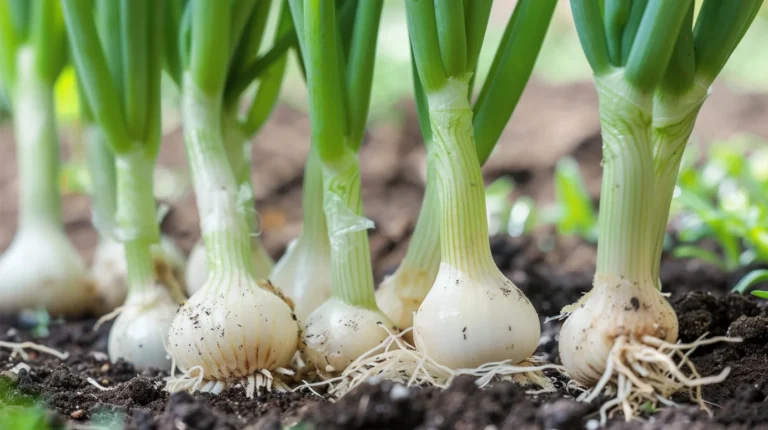Everything You Need to Know About Growing Mitsuba

Are you looking for a low-maintenance plant that offers both flavor and versatility in the kitchen? If so, mitsuba might just be the perfect addition to your garden. This often overlooked herb and vegetable is a staple in Chinese, Japanese, and Korean cuisine, offering a unique blend of flavors that can enhance a wide variety of dishes.
In this comprehensive guide, we will delve into the world of mitsuba, exploring its cultivation, history, growing tips, varieties, and even how to use it in your cooking. Whether you are a seasoned gardener looking to expand your herb collection or a newbie looking for an easy-to-grow plant, mitsuba has something to offer for everyone.
So, let’s roll up our sleeves and dig into the fascinating world of mitsuba!
What Is Mitsuba?
Mitsuba, scientifically known as Cryptotaenia japonica, is a member of the Umbelliferae (Apiaceae) family, which includes popular herbs like parsley, dill, and fennel. This plant features distinctive ruffled leaves that resemble a mix of Italian flat-leaf parsley and cilantro, making it a visually appealing addition to any garden.
The name “mitsuba” is Japanese for trefoil, referring to the plant’s characteristic three-leaf structure. In addition to its ornamental value, mitsuba offers a unique blend of flavors, combining hints of chervil, coriander, lovage, and celery leaf. Its versatility extends beyond just the leaves, as you can also eat the root, flowers, and seeds, making it a valuable addition to any kitchen.
Cultivation and History
Mitsuba thrives in USDA Hardiness Zones 4a-9a and is commonly found in East Asia, particularly in woodland and mountainous areas. In Japan, mitsuba is considered a traditional vegetable and is an essential ingredient in many local dishes.
Whether you choose to grow mitsuba as a self-seeding perennial or an annual herb, you can easily propagate it from seed or transplants. While mitsuba prefers moist, well-draining soil, it is tolerant of various growing conditions, making it a versatile and adaptable plant for gardeners of all skill levels.
Propagation
If you’re looking to grow mitsuba in your garden, you can start from seed or transplants. Sow seeds directly outdoors after the danger of frost has passed, or plant transplants with roots intact from specialty grocery stores.
For continuous harvesting, sow seeds every six weeks to ensure a fresh and bountiful supply of mitsuba throughout the growing season. Dividing existing plants in the autumn can also help you expand your mitsuba patch and share the plant with fellow gardeners.
How to Grow
Mitsuba is a forgiving plant that can thrive in varying light conditions, from full sun to full shade. While it is tolerant of most soil types, it prefers moist, well-draining soil to reach its full potential.
Regular watering and occasional side dressing with nitrogen-rich fertilizer can help boost growth and ensure a bountiful harvest. If you encounter dry conditions, make sure to keep the soil moist to promote healthy plant growth.
In addition, mounding soil or straw around the stems of certain varieties, like the shiro-mitsuba, can help blanch the stalks and enhance their flavor. Regular maintenance such as pinching flowers to prevent self-seeding and dividing plants when necessary can help keep your mitsuba patch in check.
Growing Tips
- Work compost into the soil when planting to improve drainage, water retention, and provide nutrients.
- Keep the soil constantly moist. Don’t let it dry out.
- Pinch the flowers to prevent self-seeding.
Varieties to Select
In Japan, mitsuba comes in two main varieties, Kanto and Kansai, each offering unique characteristics and flavors. While the Kanto variety is known for its pale stalks that are perfect for blanching, the Kansai type features deep green leaves and stems ideal for culinary use.
For those looking to add a pop of color to their garden, the purple leaf variety of mitsuba offers bronze-purple leaves and stems, making it a visually striking option for ornamental purposes.
Managing Pests and Disease
One of the perks of growing mitsuba is its resistance to common pests and diseases. While gastropods like slugs and snails might pose a threat to your plants, these pests are easily controllable with simple measures like placing pellets or using beer traps.
In terms of diseases, downy mildew can occasionally affect mitsuba, particularly in cool, moist conditions. Keeping the plants well-spaced and avoiding overhead watering can help prevent the spread of this disease. Using hydrogen peroxide-based products like BioSafe Disease Control RTS can effectively treat downy mildew and protect your plants.
Harvesting
Harvesting mitsuba is a straightforward process that can be done at any stage of growth. As an herb, mitsuba can be harvested when the plant reaches five to seven inches tall, while for the stalks, wait until they are eight to 10 inches long.
Whether you choose to use the leaves for salads, garnishes, or cooking, or incorporate the stalks in vegetable side dishes or soups, mitsuba offers endless culinary possibilities. You can also harvest the seeds for use as a flavorful spice or enjoy the root raw or cooked in various dishes.
Recipes and Cooking Ideas
Mitsuba’s delicate flavors and versatile nature make it a welcome addition to a wide range of dishes. Whether you’re using it fresh in salads and soups or incorporating it into traditional Japanese cuisine like ohitashi or sukiyaki, mitsuba adds a unique twist to every recipe.
Experiment with different cooking methods, such as blanching or steaming, to bring out the best flavors in mitsuba. You can also try using the seeds and flowers in various dishes to explore the plant’s full culinary potential.
With mitsuba in your garden, the culinary possibilities are endless, so don’t be afraid to get creative and explore new ways to incorporate this flavorful herb and vegetable into your cooking.
Quick Reference Growing Guide
- Plant Type: Perennial herb
- Tolerance: Clay soil
- Native to: Eastern Asia
- Maintenance: Low
- Hardiness (USDA Zone): 4a-9a
- Soil Type: Rich, loamy
- Season: Spring, fall
- Soil pH: 6.0-7.5
- Exposure: Full sun to full shade
- Soil Drainage: Well-draining
- Time to Maturity: 60 days
- Attracts: Flowers attract bees
- Spacing: 6-9 inches
- Companion Planting: Chervil, cilantro, lungwort, sweet cicely, violets
- Planting Depth: 1/4 inch (seeds)
- Avoid Planting With: Rosemary, sage
- Height: 3 feet
- Spread: 2 feet
- Water Needs: High
- Common Pests: Slugs and snails
- Common Diseases: Downy mildew
Make Mitsuba a Part of Your Veggie Garden
With its unique flavors, easy cultivation, and culinary versatility, mitsuba is a must-have plant for any herb or vegetable garden. Whether you’re a seasoned gardener looking to expand your collection or a beginner eager to explore new flavors, mitsuba offers something for everyone.
By following the tips and guidelines outlined in this comprehensive guide, you can successfully grow mitsuba in your garden and enjoy the bountiful harvest it provides. From planting to harvesting, mitsuba is a rewarding plant that will enrich your culinary experience and bring a touch of East Asian flavor to your kitchen.
So, why not make mitsuba a part of your veggie garden today? Explore the world of Japanese honewort and discover the endless possibilities it offers for your cooking adventures. Your taste buds will thank you!
Remember, gardening is a journey of discovery and experimentation, so don’t be afraid to get your hands dirty and try something new. With mitsuba in your garden, every meal can be a culinary delight filled with the unique flavors of this versatile herb and vegetable. Happy gardening, and happy cooking!





